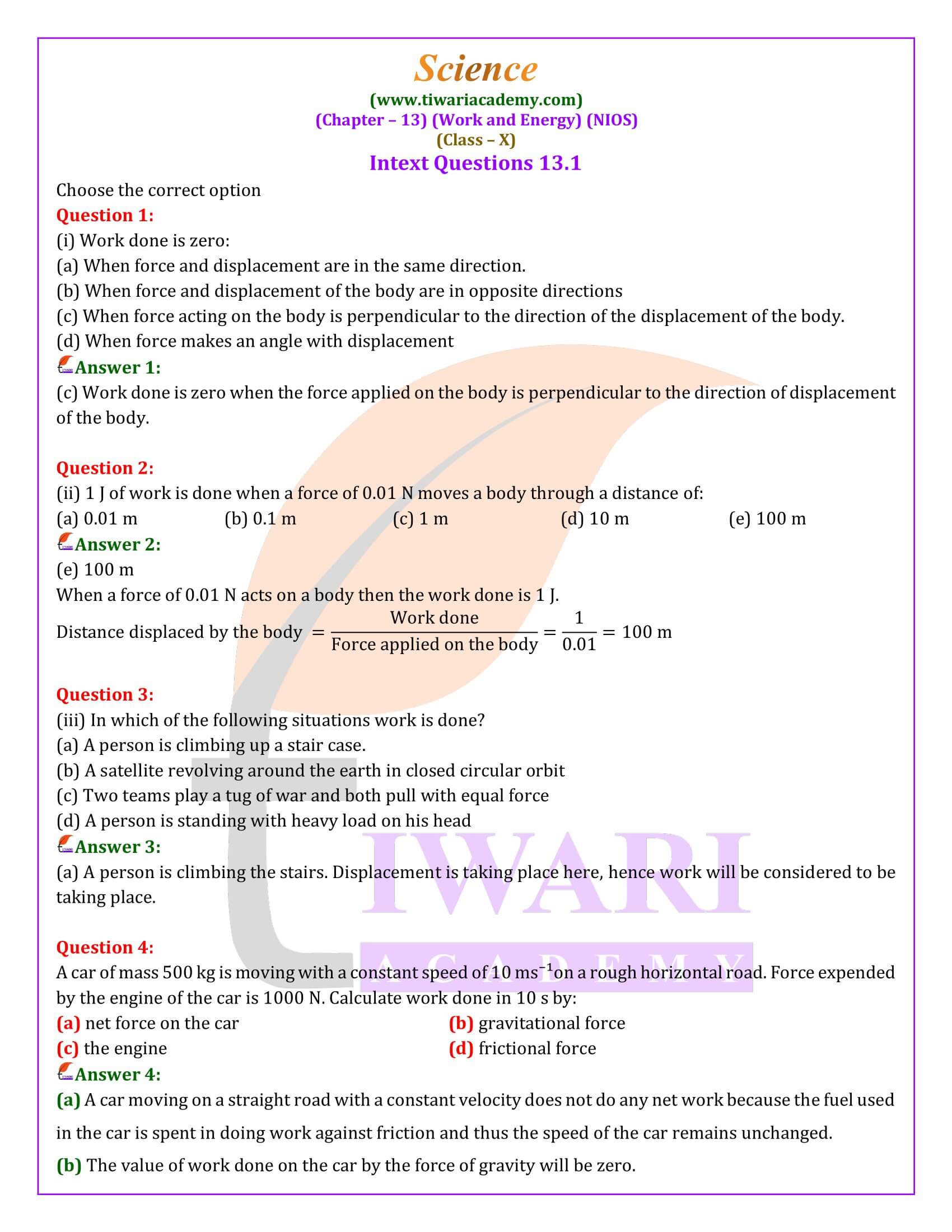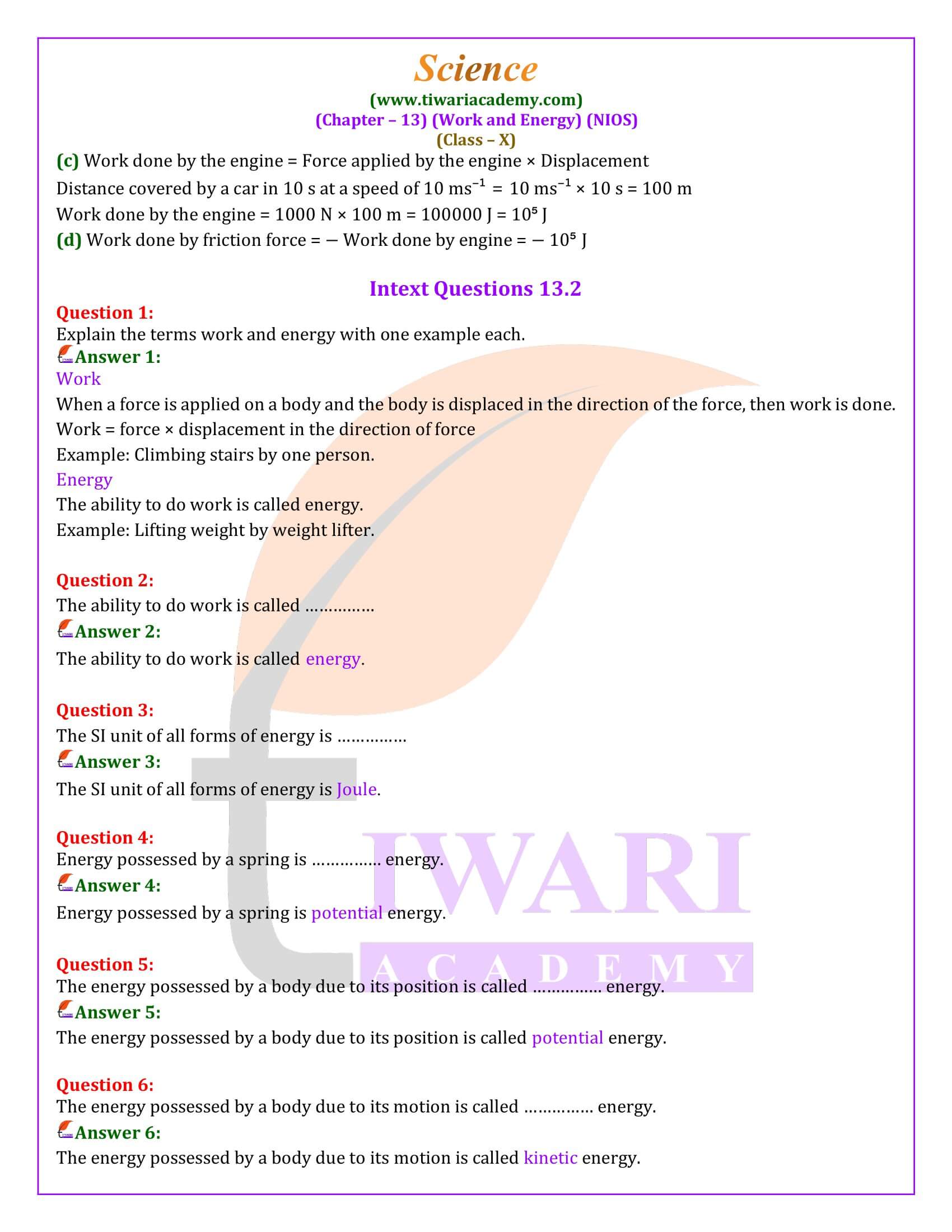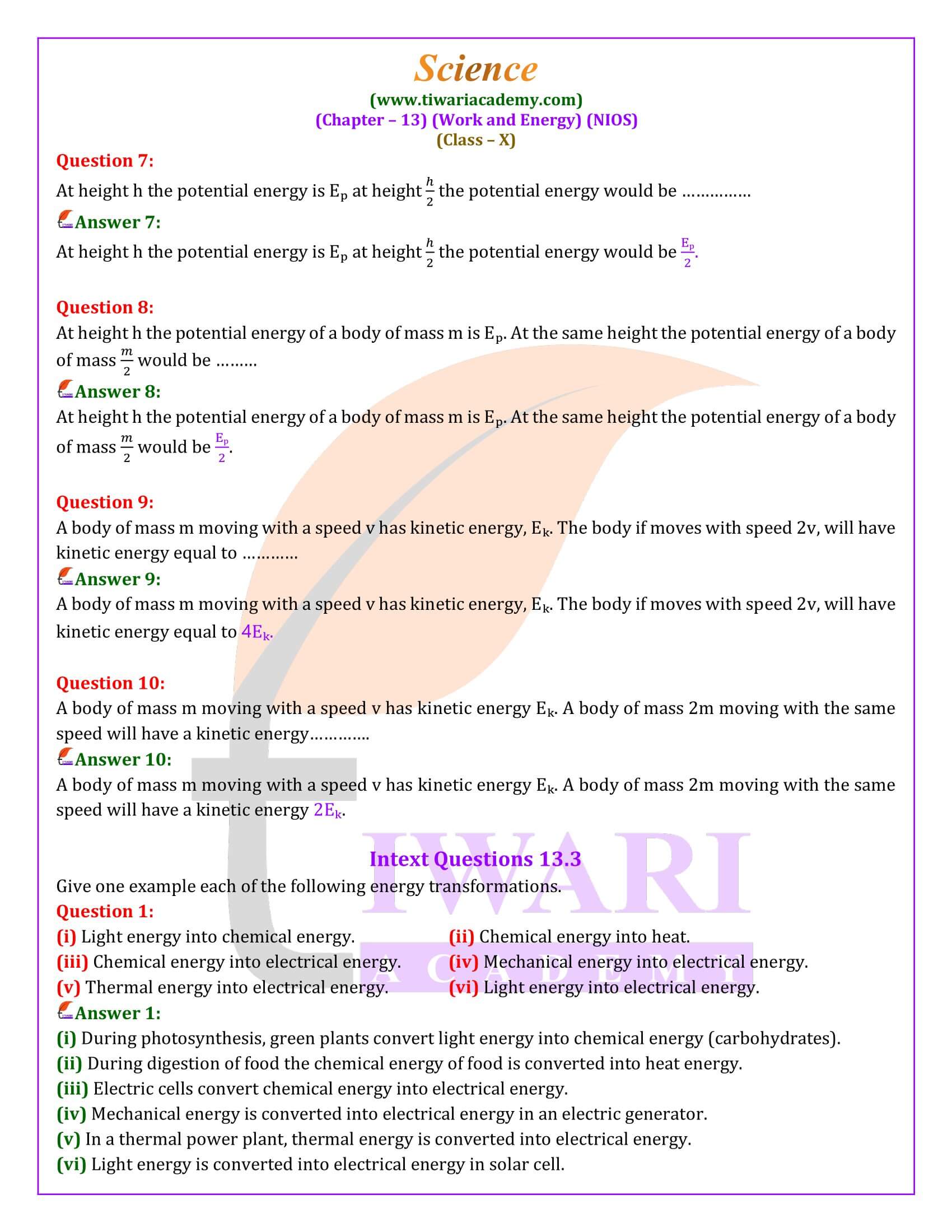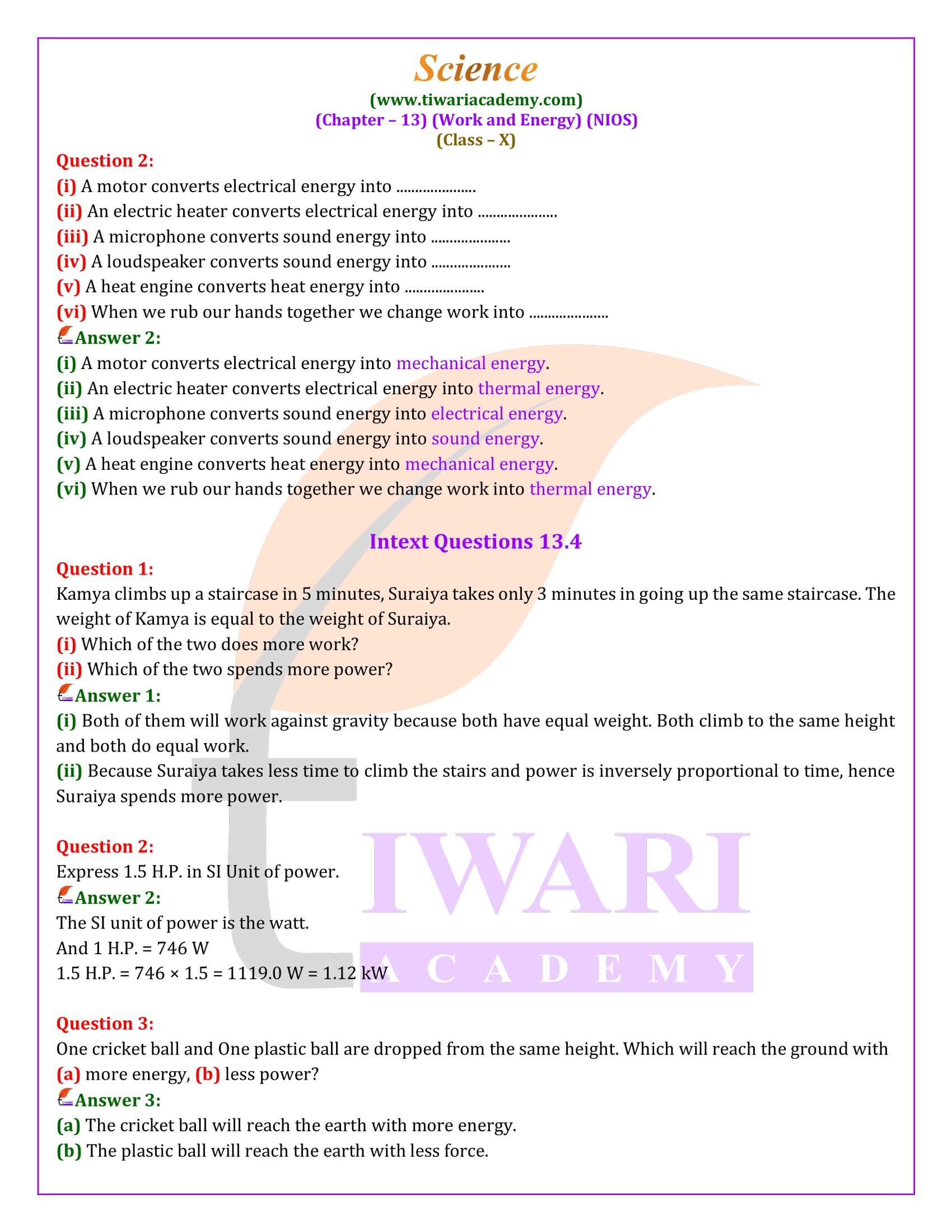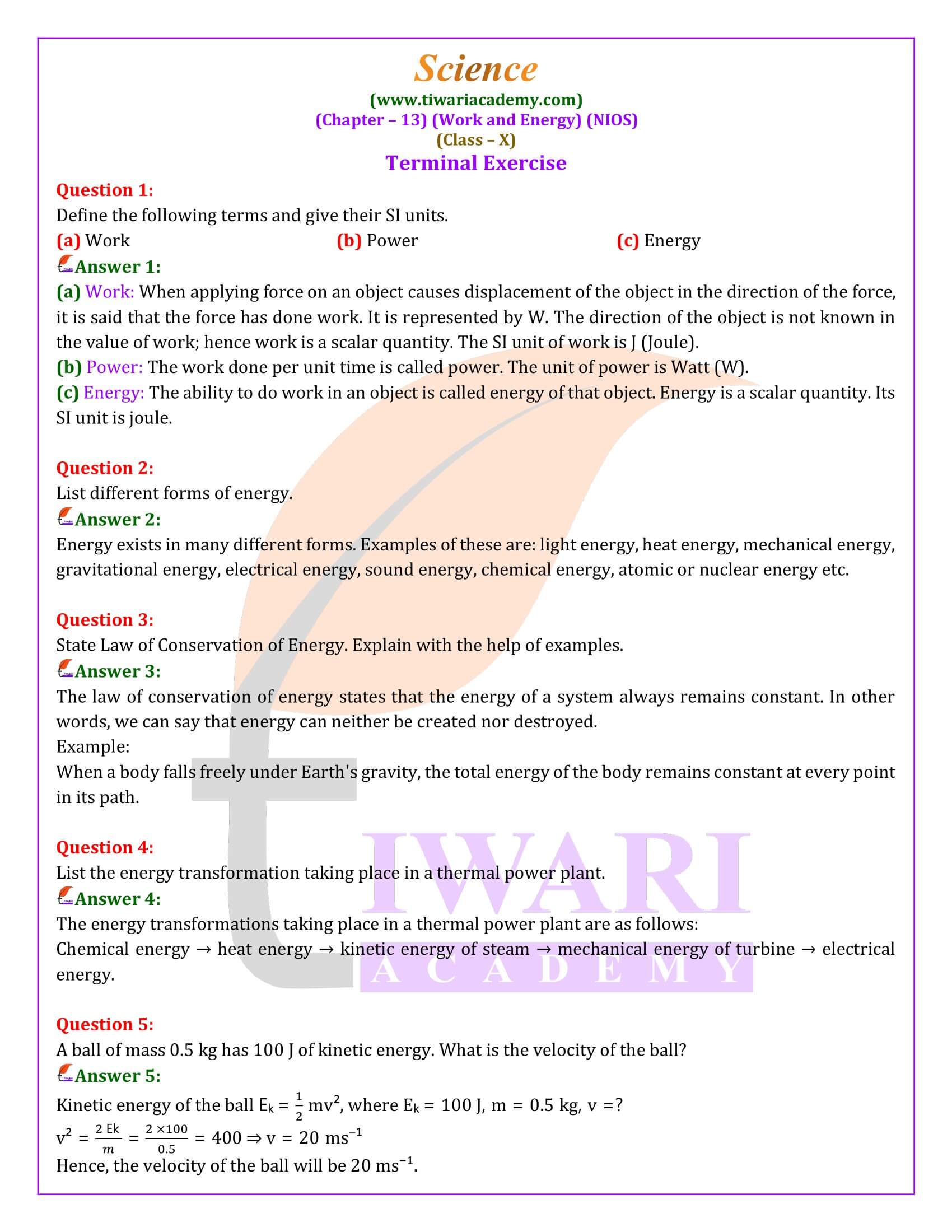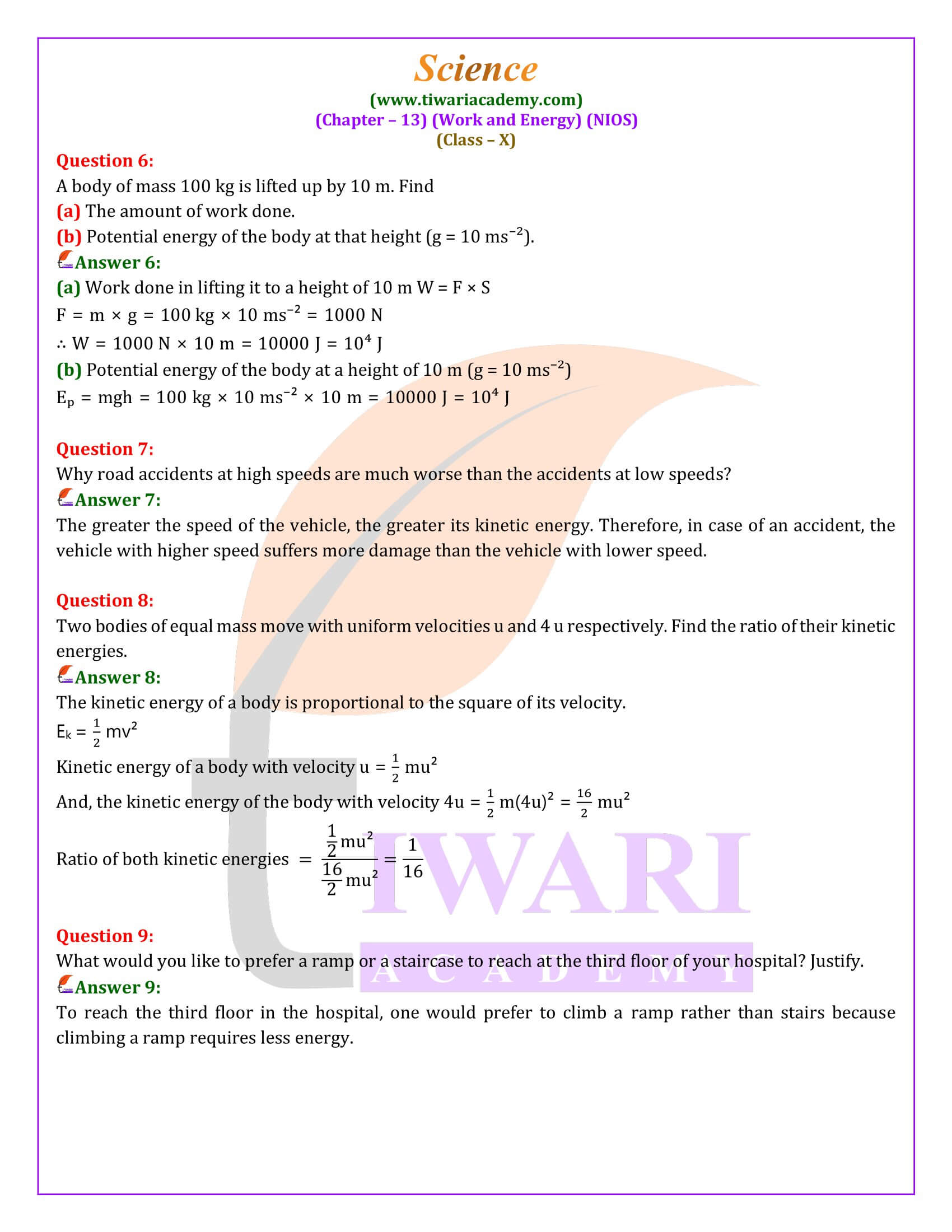NIOS Class 10 Science Chapter 13 Work and Energy in Hindi and English Medium revised and updated for new academic session 2025-26. NIOS Class 10 Science Chapter 13 Question Answers with intext questions are given here with complete solutions.
Work and Energy
Understanding Work and Energy: A Comprehensive Overview – Work and Energy are fundamental concepts in physics, deeply intertwined with our understanding of forces and movement. The chapter 13 describe the concepts, starting from the basic definitions of work, energy, and power, exploring their various forms, and finally discussing the principles of energy transformation and conservation.
Work: The Foundation of Motion
Work, in physics, is defined as the process of a force causing an object to move. For work to be done, a force must be applied in the direction of the movement. This precise definition sets the groundwork for understanding energy and power. If an object does not move, or if the force applied is perpendicular to the direction of movement, no work is performed. This principle is crucial in understanding how forces interact with the physical world.
The Concept of Energy
Energy is the ability to perform work. This chapter highlights the various forms of energy – mechanical, thermal, light, electrical, chemical, and nuclear – and their significance in our daily lives. Mechanical energy, for example, can be either potential or kinetic, depending on an object’s position or movement. This distinction is vital for comprehending how energy is stored and utilized in different scenarios.
Energy Transformations and Conservation
A pivotal concept introduced in this chapter is the Law of Conservation of Energy, which states that energy cannot be created or destroyed, only transformed from one form to another. This law underpins much of our understanding of physical processes and technological advancements. For instance, in a hydroelectric dam, potential energy of stored water is transformed into kinetic energy, which is then converted into electrical energy through turbines and generators.
Power: Measuring Work Over Time
Power is defined as the rate at which work is done. It’s a measure of how quickly or efficiently energy is used or transferred. Understanding power is crucial for evaluating the performance of machines and devices. The chapter discusses various examples and exercises to elucidate how power plays a role in everyday activities and industrial processes.
Real-World Applications and Examples
Through activities, examples, and in-text questions, this chapter connects the abstract concepts of work, energy, and power to tangible experiences and observations. Activities such as climbing stairs or inflating balloons are used to illustrate how energy is expended and transformed in real-life scenarios. These examples not only reinforce the theoretical foundations but also demonstrate the practical implications and applications of these concepts.
The Interconnectedness of Work, Energy, and Power
This chapter meticulously unravels the intricate relationships between work, energy, and power, laying a solid foundation for further exploration of physical sciences. The emphasis on real-world applications and the principle of energy conservation highlights the relevance of these concepts beyond the classroom. Understanding these principles is essential for navigating the complexities of the physical world and harnessing the potential of various forms of energy for technological advancement.
